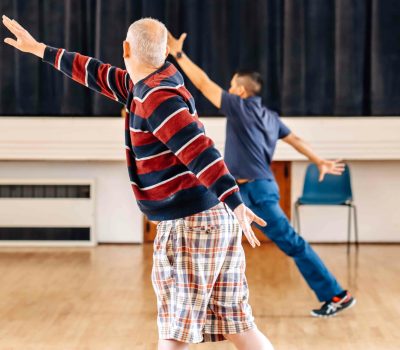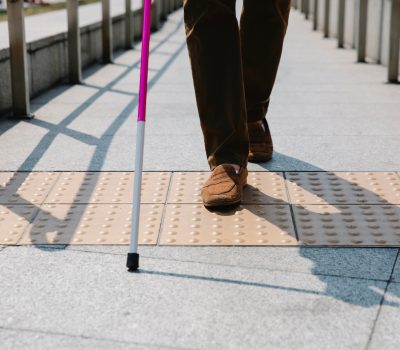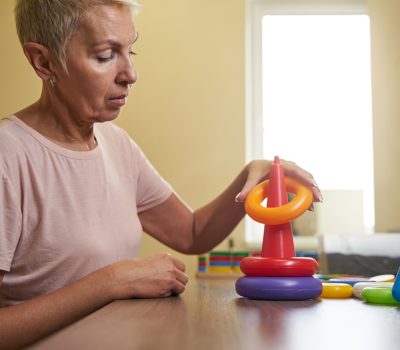Introduction:
Brain injuries (Traumatic or Acquired) can be life-altering experiences and can impact many aspects of a person’s life. As everyone’s brain injury can be different, the symptoms they experience also vary. In this blog we will talk about the different aspects that can be affected by hypersensitivity (also called sensory overload), and how it may be treated and managed. It is important to remember that some aspects of hypersensitivity may not initially be noticed as they can be difficult to recognise.
Hypersensitivity (sensory overload, over stimulation)
Hypersensitivity refers to the increased sensitivity of any sensory stimuli, including touch, sound, smell, noise, taste, temperature etc. In the context of brain injuries this is due to the brain’s ability to filter and process the sensory information being experienced being impaired and can lead to these stimuli feeling overwhelming, distressing or uncomfortable. It can also mean you avoid certain situations to prevent triggering these unpleasant sensations and you may feel socially isolated as a result.
Brain Injuries are complex and the hypersensitivity you are experiencing can be for one of the following causes:
- Neurological Injury to the brain’s sensory processing centres which filter and modulate sensory stimuli.
- Changes in brain chemistry can result from brain injuries. These disrupt the balance of neurotransmitters which affect the way sensory information is transmitted and processed.
- Altered perception can lead to the brain interpreting normal everyday sensory stimuli, such as lights or sounds as unbearable.
How my senses may be affected:
- Auditory hypersensitivity, you may become sensitive to everyday noises, meaning that noisy or busy environments may be difficult to tolerate. This can make crowd situations very difficult to function in, as filtering background noise and attending to the important conversation may be too much to process.
- Photophobia is a sensitivity to light. It can cause discomfort or pain when exposed to bright lights. Meaning activities outside or brightly lit areas may not be tolerated.
- Hyperacusis is when you have an extreme sensitivity to everyday sounds, and they can be intolerable or painful. This can lead to social isolation or anxiety about noisy environments.
- Tactile hypersensitivity can cause you to be uncomfortable wearing certain clothes or using certain materials (eg, bed sheets). It can also make physical touch uncomfortable or in some cases painful.
- Olfactory and gustatory hypersensitivity can result in your tastes changing, or smells becoming unpleasant or overwhelming. This can affect a person’s diet as they may develop an aversion to certain foods.
It is important to remember that your level of hypersensitivity may fluctuate, notably they may worsen with fatigue or tiredness. Sometimes over-exertion, increased cognitive load, poor sleep may also influence the level of your hypersensitivity. It is important to look at your situation as a whole in order to find any triggers and work with your professionals to develop strategies to manage these triggers.
How to manage these changes:
As with physical impairments there can be a degree of recovery with treatments (rehabilitation and medical) but there also may be a degree of impairment that does not resolve. Where hypersensitivity remains, we look to develop strategies and manage exposure to situations that cause distress.
Rehabilitation:
Gradual exposure to sensory stimuli can help the brain desensitise over time. This means initially stripping back sensory stimuli and slowly increasing these stimuli. An example may be limiting yourself to speaking to one person in a quiet environment, before adding a second person or going to a noisier environment. The aim would be to progress over weeks or months to be as close to before the injury as possible, grading the activity allows your brain to recover and build up its ability to process the stimuli.
Medication can be used to manage hypersensitivity to certain stimuli. This should be discussed in conjunction with your neurological consultant or GP and relate to specific impairments.
Hypersensitivity can lead to secondary complications such as anxiety which affect us both emotionally and psychologically. If possible, mindfulness and relaxation techniques have been shown to be effective with managing these aspects of hypersensitivity. You may also choose to use a talking therapy or counselling to aid your use of these treatments and guide you through the process.
Strategies:
Reducing your exposure to stimuli that is causing hypersensitivity can bring about a level of relief, and if you cannot grade to the level required you may consider making adaptation to create a sensory friendly environment. For example, if you are suffering from photophobia, you may use blackout curtains, darkened glasses or change to lower watt lights. If you notice tactile hypersensitivity a change to softer materials may be appropriate. However, it is important that you continue to try graded and controlled exposure to stimuli, to avoid unhelpful behaviours which can lead to avoidance and potentially make the sensitivity worse.
Strategies may include:
- Resting before going out or an activity, having a short nap can help regulate your brain chemistry, ensuring your brain is functioning optimally. It can improve your attention, processing and problem solving.
- Planning ahead, before going out or activities, for example if you are going to a noisy environment is there a time when it may be quieter or taking noise cancelling headphones to help manage the situation.
- Knowing your limits, if you can manage 1 hour outside before your photophobia becomes overwhelming, have a way to rest or limit your exposure. Set time limits to being in over stimulated environments.
- Graded controlled exposure, as we have already discussed
Occupational therapists, physiotherapists and neuropsychologists can help assess your situation and develop the above strategies with you to manage the hypersensitivity. Their aim is also to increase your engagement in daily activities that you may currently be avoiding or unable to complete. Coping strategies they help you develop are aimed at improving your sense of control and overall quality of life.
Lastly there are support groups and networks that aim to support people with hypersensitivity and those who care for them. They are often a valuable resource with access to further support and social inclusion. Many charities and support groups are listed below:
Headway – the brain injury association | Headway
Brain injury – The Brain Charity






